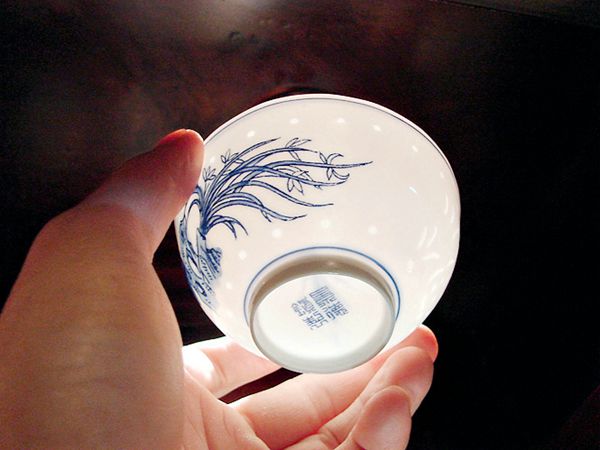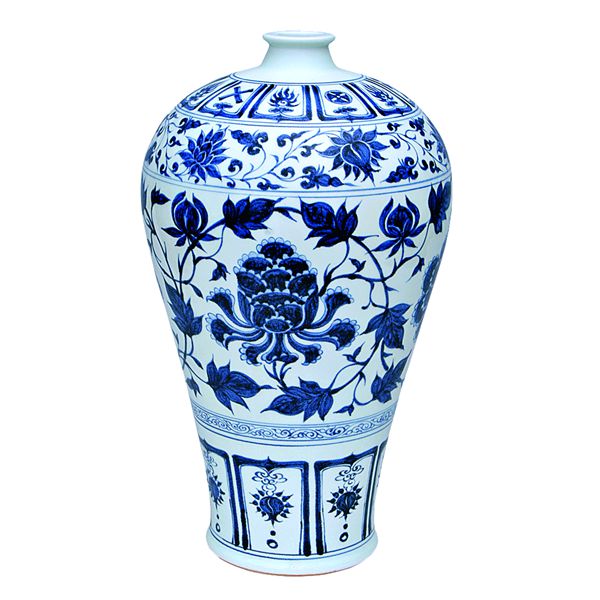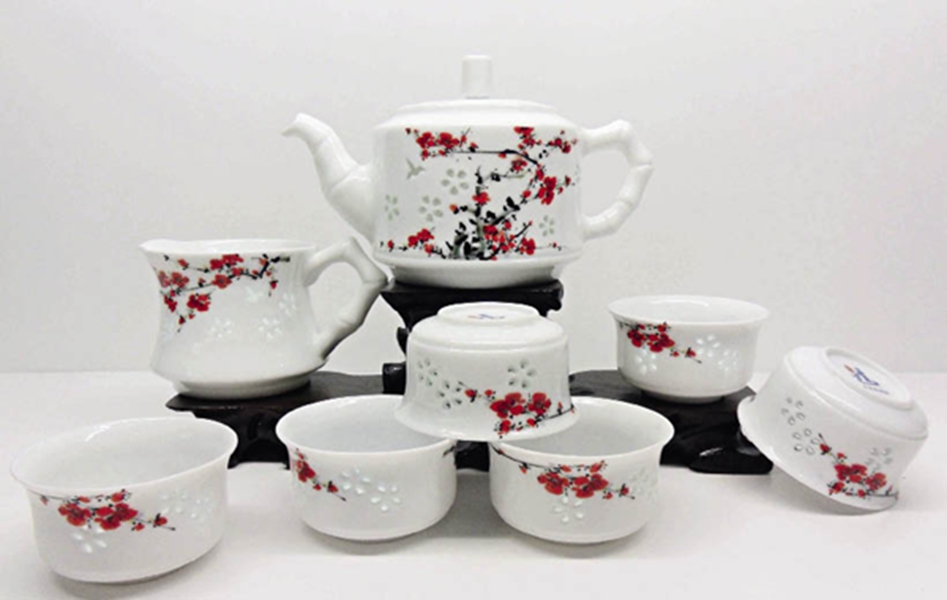By GU HE
By GU HE
ACCORDING to legend, the English pronunciation of the word “china,” meaning porcelain, originates in the historical name of China’s porcelain capital: Changnan, now called Jingdezhen.
Porcelain is made from kaolin that solidifies and becomes impermeable after being heated to temperatures of 1,280 to 1,400OC. It is often decorated with colors and patterns obtained from pigments that change color depending on the firing temperature.
During archaeological excavations of the ancient capital of the Shang Dynasty (17th-11th century BC) the remains of green-glazed vessels were found among the ruins. These hard fragments had been fired at very high temperatures. Their bibulous rate is low and, in line with their chemical composition and properties, they are completely different from pottery. Experts, therefore, classify them as “protoporcelain.” The Shang Dynasty marked the beginning of this art.
In The History of Chinese Ceramics Feng Xianming and other scholars cite the Eastern Han Dynasty (AD 25-220) as the time when mature works of porcelain first appeared in China. “More evidence allows us to say that it has appeared since then, including porcelain objects discovered in Shangyu and Ningbo of Zhejiang Province. Since in ancient times these areas belonged to Yuezhou Prefecture, hence the name Yue kiln. The late Tang Dynasty and Five Dynasties period, about 1,000 years ago, was the golden Yue kiln age. A line of Lu Guimeng’s poem of the late Tang Dynasty reads: “In late autumn when the Yue kilns are lit, the emerald hue of a thousand peaks is captured by the celadon.” Yue porcelain is noted for its deep green shade and hence dubbed “the emerald hue of a thousand peaks.”
The white porcelain produced at that time in southern Jiangxi Province is called “false jade.” Henan Province was synonymous with the blue and white porcelain it produced, admired for its deep blue shade and density of vessel walls.
The Tang Dynasty was also when exports of Chinese porcelain peaked. Today, Tang Dynasty porcelain objects can be found in Japan, Korea, the Philippines, Iraq, Egypt, and Kenya.

A luminescent eggshell bowl produced in Jingdezhen.
The city of Jingdezhen has been famous for its porcelain since the Song Dynasty (960-1279). Under the reign of Emperor Jingde, the city became the producer of imperial porcelain and was renamed Jingdezhen. The esteem that the ruling class accorded Jingdezhen chinaware enhanced the city’s development and prosperity. Jingdezhen porcelain has many styles, including elegant blue and white and vibrantly colorful porcelain, the former the best known.
During the Yuan Dynasty (1271-1368) the world demand for blue and white porcelain burgeoned, and this superlative quality world treasure so widely admired was exported in large quantities. Recent statistics show that there are now around 300 pieces extant of blue and white porcelain dating from the Yuan Dynasty, 80 of which are housed in museums in Turkey.

A blue-and-white prunus vase from the Yuan Dynasty.
Throughout the Ming and Qing dynasties (1368-1911), Jingdezhen was the center of China’s porcelain manufacture. This period was the golden age of Chinese porcelain, as regards amplitude, style, quality, and market demand. It honed the reputation of Chinese porcelain for being as “white as jade, bright as a mirror, paper thin, and with a bell-like ring.”
Chinese porcelain had both material and spiritual value. The Japanese praised the Ming porcelain for its beauty and finesse, while European royal families and nobility obsessively ordered and collected Chinese porcelain to augment their social image of wealth and rank.
Aside from its aesthetic value, porcelain had high mercantile value. In some countries it was used as currency and equal in worth to certain precious metals.

Exquisite bone china tea set.
As a daily necessity, porcelain was also used to fashion food vessels to accompany the newly-departed to their tombs.
From the Tang Dynasty, porcelain was exported around the world mainly along two routes: the Silk Road from China’s mainland to Central Asia, Persia, and areas surrounding the Mediterranean; and the Maritime Silk Route, which started in Guangzhou, carried on to the Malay Peninsula through the Indian Ocean to the Persian Gulf, and finally reached the Mediterranean and Egypt. The two roads have greatly promoted cultural exchanges between China and the world. Neither porcelain nor silk are exclusive treasures of Chinese civilization, but delights for all humanity to cherish.
(Selected from Monthly Digest by Zhonghua Book Company)